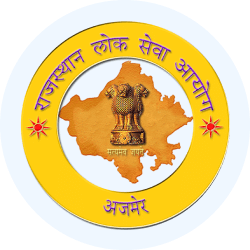RPSC Monthly Current Affairs: April 2025 | Monthly Current Affairs RPSC - RPSC RAS (Rajasthan) PDF Download
Solar Project in Pokhran

Why in News?
Recently, the Union Minister for New and Renewable Energy inaugurated a solar project in Pokhran, Jaisalmer, with a peak power capacity of 1.3 GW.
Key Points About Solar Project:
- Made-in-India: The project is built entirely with solar modules, 90% of which are produced by ReNew, a Jaipur-based company.
- Objective: The primary goal is to enhance electricity production while safeguarding the environment.
- Power Generation: It is expected to generate around 2490 million units of electricity annually, sufficient to meet the needs of approximately 500,000 households.
- Reduction in Carbon Emissions: The project aims to reduce carbon dioxide emissions by 2.3 million tonnes, contributing to environmental conservation efforts.
- Geographical Location: Located in the Jaisalmer district of Rajasthan, the project spans about 3500 acres in an area well-suited for solar energy, maximizing its potential for success.
Make in India Initiative
- Introduction: Initiated in 2014, Make in India aims to establish the country as a leading global manufacturing and investment hub, overseen by the Department for Promotion of Industry and Internal Trade (DPIIT) under the Ministry of Commerce and Industry, Government of India.
- Objective:
- To achieve an annual growth rate of 12-14% in the manufacturing sector.
- To generate 100 million new manufacturing jobs by 2025.
- To increase the manufacturing sector's contribution to 25% of GDP by 2025.
Solar Energy
- Solar energy is a renewable and pollution-free energy source harnessed from the sun, making it one of the most abundant and sustainable forms of energy available.
- Uses of Solar Energy:
- Solar Thermal Energy: This involves converting sunlight into heat, which can be used for heating water, regulating temperatures, or in various industrial processes.
- Solar Photovoltaic Energy: This method directly converts sunlight into electricity using solar panels (photovoltaic cells), providing power to homes and industries.
- Advantages of Solar Energy:
- It is a renewable resource, consistently available as long as the sun shines.
- Solar energy has a low environmental impact since it does not produce harmful emissions or pollution.
- It is a sustainable energy solution, offering long-term benefits without depleting resources.
- Solar energy provides a viable solution to energy shortages, especially in remote areas with limited access to traditional power sources.
MGNREGA Scheme
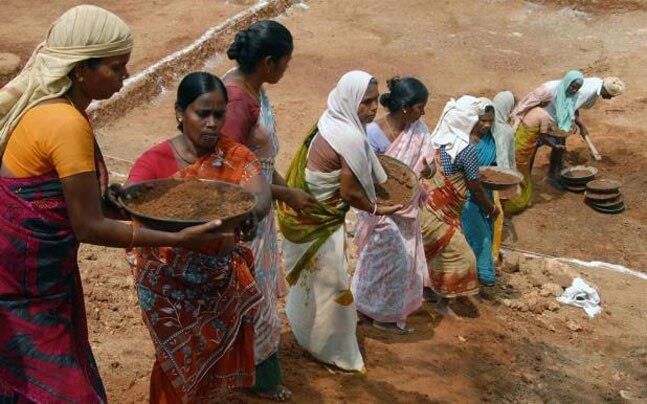
Why in News?
The Mahatma Gandhi National Rural Employment Guarantee Act (MGNREGA) is currently receiving attention because the Rajasthan government has modified work hours to better accommodate the health and convenience of workers during the summer months.
Key Points About MGNREGA
- Ministry of Rural Development: MGNREGA, launched in 2005, is one of the largest employment guarantee programs in the world.
- Employment Guarantee: The scheme ensures a minimum of 100 days of employment each financial year for adult members of rural households willing to do unskilled manual work on public projects at minimum wages.
- Active Employees: Approximately 14.32 Crore (2023-24 estimate).
Key Features:
- The core feature of MGNREGA is its legal guarantee, which allows rural adults to request work, and it must be provided within 15 days.
- If this requirement is not met, an unemployment allowance should be provided.
- Women are given priority, with a mandate that at least one-third of the registered beneficiaries must be women.
- Section 17 of MGNREGA requires a social audit for all works conducted under the scheme.
Implementing Agency:
- The Ministry of Rural Development (MRD), Government of India, is responsible for overseeing the implementation of the scheme in coordination with state governments.
Objective:
- The act aims to enhance the purchasing power of rural communities.
- It focuses on providing semi-skilled or unskilled work for individuals living below the poverty line in rural India.
- The scheme aims to reduce the economic disparity between the rich and the poor in the country.
Amer Fort
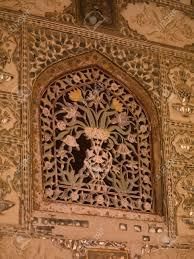 Amer Fort
Amer Fort
Why in News?
During her visit to India, US Vice President Kamala Harris met with Indian Prime Minister Narendra Modi in Jaipur to discuss India-US relations. Key Points about the Visit:
- Amer Fort
- Ghoomar Dance
- Kalbelia Dance
- The Vance family was welcomed in a traditional Rajasthani manner, including a Kachhi Ghori procession.
- At the Rajasthan International Centre (RIC) in Jaipur, discussions on India-US relations took place, with praise for India's cultural experience.
Amer Fort: Overview
Amer Fort, also known as Amber Fort, is a UNESCO World Heritage Site situated in the Aravalli mountain range, approximately 11 kilometers from Jaipur, the capital of Rajasthan. This fort is renowned for its magnificent architecture, historical significance, and cultural richness, making it one of the most famous Rajput forts in India and a major attraction for international tourists.
History and Architecture
Amer Fort showcases a remarkable blend of Hindu and Rajput architecture, with influences from both Rajasthani and Mughal styles evident in its design. The fort was initially built by Raja Man Singh I in the late 16th century and later expanded and modified by Mirza Raja Jai Singh I and Sawai Jai Singh II. Amer Fort served as the capital of the Kachwaha Rajputs and was constructed in four phases using light yellow and pink sandstone, along with white marble. The fort comprises four main sections, each featuring its own courtyard.
Major Structures and Attractions
Amer Fort is home to several significant structures, including:
- Diwan-i-Aam: The hall of public audience where the king would meet the general public.
- Diwan-i-Khas: The hall of private audience used for exclusive meetings.
- Sheesh Mahal: Also known as the mirror palace, famous for its intricate mirror work.
- Sukh Niwas: Renowned for its cool climate created by the winds passing over the water bodies.
Kalbelia Dance
The Kalbelia dance is a traditional form of dance that reflects the lifestyle of the Kalbelia community in Rajasthan. In 2010, it was recognized as part of the Intangible Cultural Heritage (ICH) by UNESCO. This dance is characterized by its spinning and graceful movements, making it a captivating performance. It is typically performed during festive occasions and holds a significant place in Kalbelia culture. The dance is exclusively performed by women, while men provide musical accompaniment and play instruments.
Mobile Veterinary Units in Rajasthan
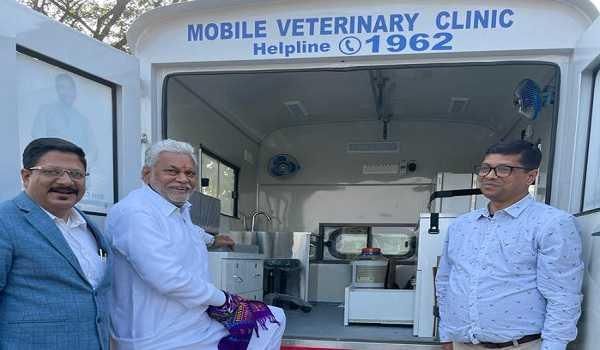 Veterinary Care Initiative
Veterinary Care Initiative
Why in News?
The Rajasthan government has launched a special campaign to promote the 1962-MVU chatbot service and related veterinary services across the state.
Key Points About the Scheme
- Medical Care for Animals: Over 41 lakh animals have received medical assistance through the Mobile Veterinary Units (MVUs) Scheme in the past year.
- WhatsApp Tele-consultancy:. new WhatsApp tele-consultancy service has been introduced, with the chatbot available at 9063475027.
- Call Centre Management: The scheme is managed through the Call Centre 1962, which has been operational for about six months.
- Funding and CSR: The operating company, BFIL (a subsidiary of IndusInd Bank), is funding the scheme under Corporate Social Responsibility (CSR).
- Publicity Campaign:. publicity campaign is underway, targeting 10 lakh livestock farmers through SMS, digital wall branding at 180 locations, audio promotions using e-rickshaws and tempos, distribution of 7 lakh pamphlets, signage in 100 veterinary hospitals, and distribution of promotional materials like key-chains and calendars.
Objectives of the Scheme
- Home-based Medical Services: To provide medical services to livestock owners in the comfort of their homes.
- Accessibility: To make the MVU scheme more accessible to a larger number of livestock farmers.
- Technological Enhancement: To enhance access to and use of the service, including AI technologies.
- Transparency and Efficiency: To increase transparency and efficiency in the animal husbandry sector through digital initiatives and CSR efforts.
Understanding Corporate Social Responsibility (CSR)
- Definition: CSR refers to a corporate initiative that assesses and takes responsibility for a company's impact on society and the environment. It is a self-regulating business model that encourages companies to act responsibly.
- Considerations: Through CSR, companies consider their effects on economic, social, and environmental aspects, aiming to contribute positively to society.
CSR in India: Companies Act, 2013
- Mandate: India is the first country to mandate CSR spending under Section 135 of the Companies Act, 2013. This section outlines guidelines for identifying CSR activities.
- Applicability: CSR is compulsory for companies covered under Section 135, including those with a net worth of Rs 500 crore or more, a turnover of Rs 1,000 crore or more, or a net profit of Rs 5 crore or more.
- Comparison: Unlike India, many countries have voluntary CSR frameworks. Norway and Sweden also have mandatory CSR provisions, but they initially started with voluntary models.
One Time Settlement Scheme
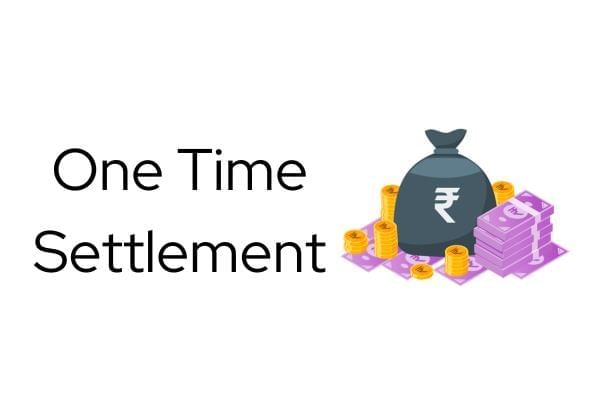
Why in News?
The One Time Settlement Scheme (OTS) has been launched by the Rajasthan government to assist farmers and small entrepreneurs while improving the financial situation of land development banks.
Key Points About the Scheme:
- The Rajasthan government announced the scheme in the budget for the financial year 2025-26.
- The first phase will run from 1 May to 30 September 2025.
- This scheme applies to loans issued by the Rajasthan Minorities Finance and Development Cooperative Corporation Limited (RMFDCC) that are overdue as of 31 March 2024.
- Borrowers must make a lump sum payment of the entire outstanding principal by 30 September 2025.
- By making this payment, borrowers will receive a 100% waiver on both simple interest and penal interest.
- The scheme aims to recover Rs 760 crore in overdue loans and will benefit 36,351 loanee members.
- Eligible borrowers can access a re-loan at a 5% interest rate under the scheme.
- The state government has proposed an expenditure of Rs 200 crore for this initiative.
Importance:
- The scheme will assist the state government in recovering outstanding loans.
- By easing the financial burden on borrowers, it will encourage greater involvement in additional government initiatives.
- It aims to build confidence and participation among the minority community in government schemes.
- This will foster a sense of awareness and responsibility regarding loan repayment.
Land Development Bank
Land Development Banks (LDB) are cooperative banks specifically created for agriculture and rural development. They provide long-term loans primarily to farmers for various purposes, including:
- Land improvement
- Irrigation
- Horticulture
- Purchasing agricultural equipment
- Animal husbandry
- Other agriculture-related activities
History: The first land development bank in India was established in 1920 in Jhang, Punjab. Another bank was set up in Chennai in 1929, marking the start of the expansion of land development banks.
Sources of Finance: These banks receive funding from:
- Grants and assistance from the Central and State Governments
- Financing for agriculture and rural development
- Issuing bonds to raise long-term finance
- Loans from various cooperative and commercial banks
Saint Dhanna Bhagat Jayanti
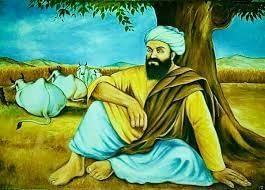
Why in News?
The Chief Minister of Rajasthan participated in the celebrations for the birth anniversary of Sant Dhanna Bhagat Ji, held at his birthplace in the Nokha-Nadi area of Jaipur district.
Key Points about Dhanna Bhagat Ji
- He was a mystic poet, born on April 20, 1415.
- His hymns are included in the Adi Granth.
- The gurdwaras dedicated to him are important places of faith, attracting many from Sikh communities.
Key Highlights of the Celebration
- The Chief Minister announced new religious, cultural, and social schemes from the state government.
- He emphasized the continued relevance of the saint's teachings today.
- Saint Dhanna Bhagat Ji advocated for selfless service to humanity and opposed casteism through his writings and teachings.
- He is revered by both the Hindu and Sikh communities.
- The Chief Minister described the saint as a symbol of social equality, spiritual awareness, and simple living.
State Government Announcements and Initiatives
- The state government has increased the offering amount at temples to ₹3,000 per month.
- The honorarium for priests has been raised to ₹7,500 per month.
- Projects worth ₹101 crore have been approved for upgrading religious sites.
- ₹60 crore has been allocated for temples outside the state through the Devasthan Department.
Rajasthan Data Center Policy 2025
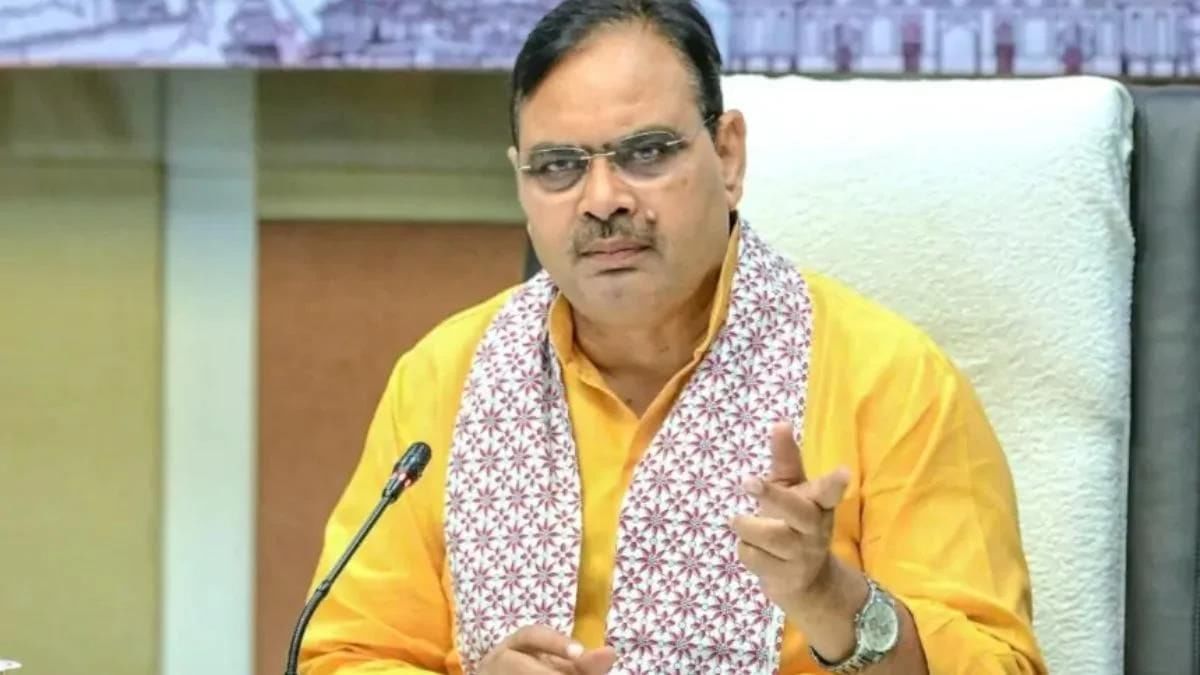
Why in News?
The Rajasthan Government has introduced the "Rajasthan Data Center Policy-2025" in response to the increasing importance of data centres.
Objectives of the Policy
- Transform Rajasthan into a leading hub for data centres.
- Attract significant investments and create job opportunities.
Policy Features
- Offer a range of concessions, eco-friendly incentives, and state-of-the-art infrastructure to investors.
- Aim to attract Rs 20,000 crore in investments over the next five years.
Incentives and Support
- Annual asset creation incentive ranging from Rs 10 to 20 crore for a decade to encourage growth in the data centre sector.
- Additional 25 percent sunrise incentive for private companies investing over Rs 100 crore in the state.
- 5% interest subsidy for five years to reduce establishment costs for data centres.
- 100% waiver on banking, transmission, and wheeling charges for data centres.
- Flexible payment options for land-related processes and exemptions from stamp duty, land conversion fees, and electricity charges.
- Exemption from external development charges up to Rs 10 crore for data centres.
- 50% reimbursement on expenses for green solutions, up to Rs 12.5 crore, to promote environmental protection.
- 50% reimbursement of costs for employee training or efficiency improvement initiatives.
- Support for intellectual property rights covering up to 50 percent of costs, with a maximum of Rs 1 crore.
- Relaxation in building bylaws and assurance of uninterrupted power supply to enhance operational efficiency and safety.
Understanding Intellectual Property Rights
- Intellectual Property Rights (IPR) are legal protections granted to individuals for their creative and intellectual works. These rights ensure that creators have exclusive control over their creations, such as books, research, inventions, and artistic works. The primary purpose of IPR is to foster and encourage human creativity by giving creators the incentive to produce original works.
- Given the broad scope of intellectual property, it is important to organize and establish specific rights and regulations for different areas of intellectual creation. This helps in balancing the interests of creators, the public, and the economy.
Ranthambore Tiger Reserve
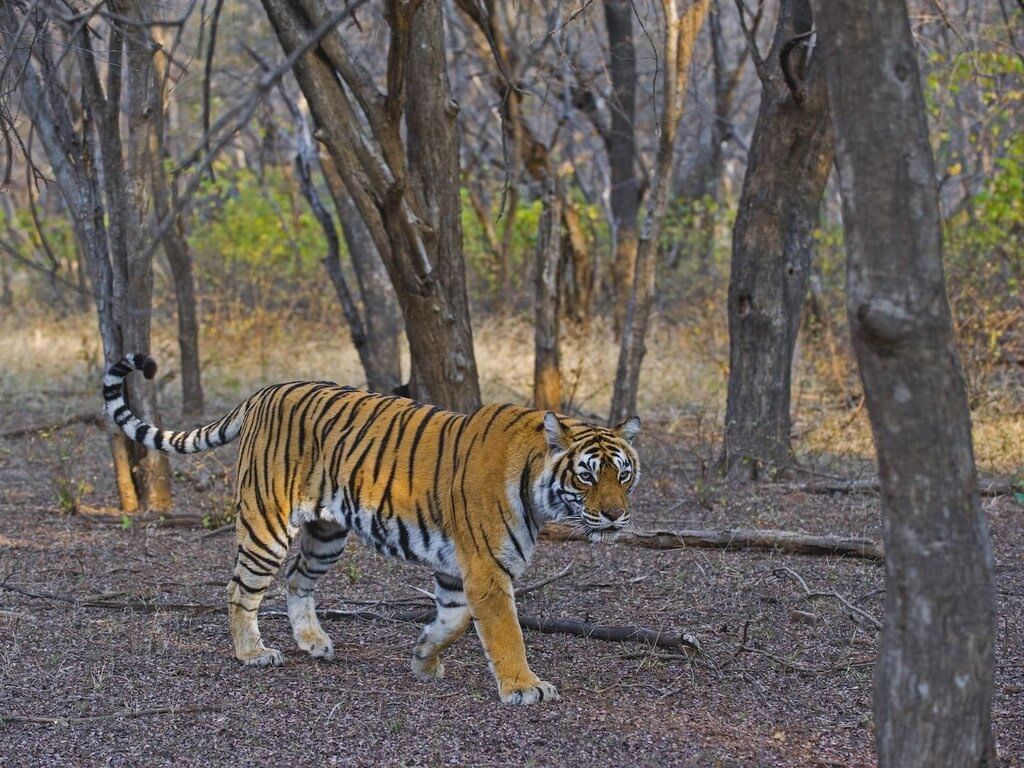 Tiger Habitat
Tiger Habitat
Why in News?
Recently, there was an unfortunate incident at the Ranthambore Tiger Reserve, where a seven-year-old boy lost his life due to a tiger attack near the Trinetra Ganesh temple in Rajasthan on April 16, 2025. This incident highlights the ongoing challenges and interactions between wildlife and human populations in areas where tiger habitats overlap with human activities.
Key Points About Ranthambore Tiger Reserve
- Location: Ranthambore Tiger Reserve is located at the junction of the Aravalli and Vindhya mountain ranges, covering parts of Karauli and Sawai Madhopur districts in eastern Rajasthan.
- Components: The reserve includes Ranthambore National Park, along with Sawai Mansingh and Kailadevi sanctuaries.
- Historical Significance: The reserve is named after the ancient Ranthambore Fort, built by a Chauhan ruler in 944 AD. The fort, perched on a 700-foot-high hill, has a rich history of over a thousand years.
- Tiger Habitat: This area marks the northwestern limit of the Bengal tiger's habitat and is a notable example of successful wildlife conservation in India.
Features
- Landscape: The reserve features a variety of landscapes, including fragmented forests, ravines, river channels, and agricultural lands.
- Ecological Connectivity: It is ecologically connected to the Kuno-Palpur landscape in Madhya Pradesh through parts of the Kailadevi Wildlife Sanctuary.
- Waterways: Tributaries of the Chambal River facilitate the movement of tigers to Kuno National Park.
Flora and Wildlife
- Vegetation: The reserve's vegetation includes grasslands on plateaus and dense forests along seasonal rivers. The predominant forest type is tropical dry deciduous, with Dhak (Butea monosperma) being the most common tree. This tree is known for its drought resistance and is often called the 'forest fire tree' due to its role in adding colour during dry summers.
- Wildlife: The park is home to a diverse range of wildlife, with tigers at the top of the food chain. Other animals found in the reserve include:
- Leopard
- Blackbuck
- Striped Hyena
- Hanuman Langur
- Rhesus Macaque
- Jackal
- Jungle Cat
- Caracal
- Black-naped Hare
- Chinkara
Constitution Park in Kota
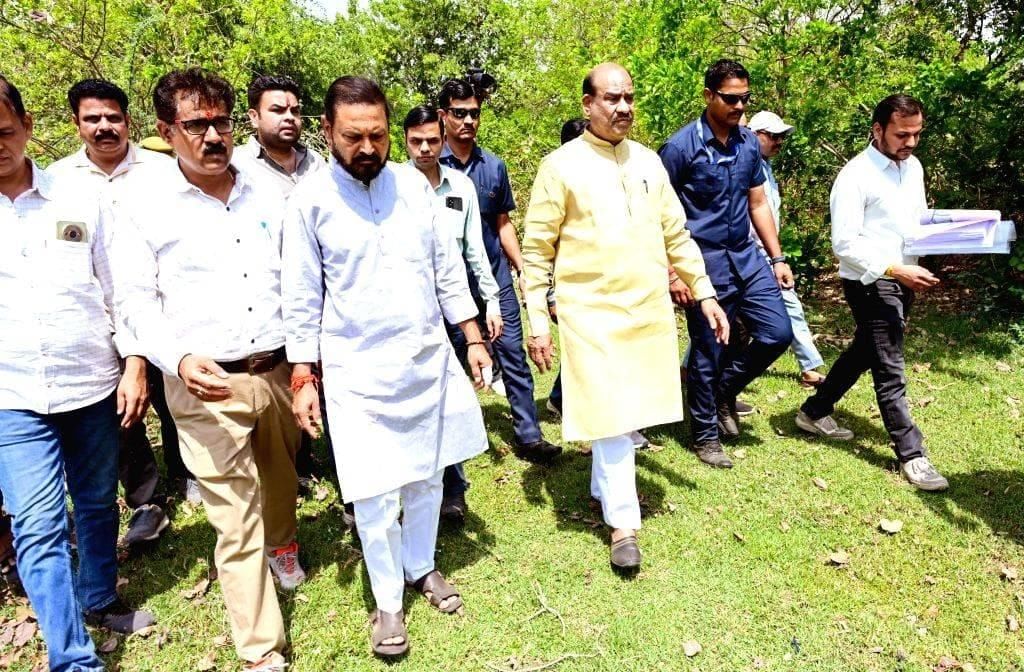 Constitution Park
Constitution Park
Why in News?
Lok Sabha Speaker Om Birla inspected the site earmarked for the proposed Constitution Park in Kota, Rajasthan.
Key Points About Constitution Park:
- This park, to be developed over 12,000 square metres, will give Kota a renewed cultural and intellectual identity.
- The entrance will display the preamble of the Indian Constitution: “Justice, Equality, and Fraternity.”
- A grand statue made of gunmetal will be installed in the centre.
- Historical events related to the Constitution's creation will be shown on a 20 feet high wall.
- Civil rights will be illustrated through crafts and sculptures in the Fundamental Rights Path.
- Information about key figures who contributed to the Constitution will be available through digital means.
- The aim is to communicate the core values of the Constitution: justice, liberty, equality, and fraternity to the public.
- The park will serve as an inspiring hub for students, researchers, citizens, and tourists.
- The Indian Constitution is often seen as the longest written constitution of any sovereign nation.
- For preparation, Drishti IAS offers a UPSC Mains Test Series for 2025.
- The Constitution was handwritten in calligraphy by Prem Bihari Narayan Raizada, with each page decorated by artists from Shantiniketan under Nandalal Bose's guidance.
- It took 2 years, 11 months, and 18 days to complete the Constitution.
- The basic structure is based on the Government of India Act, 1935.
- The Constitution declares India a sovereign, socialist, secular, and democratic republic that ensures justice, equality, and liberty for its citizens while promoting fraternity.
- It was created by the Constituent Assembly, which formed a total of 13 committees for various tasks.
- The drafting was led by a seven-member committee headed by Dr. B.R. Ambedkar, known as the Father of the Indian Constitution.
- The Constitution drew inspiration from several others, including those of the US, UK, Ireland, France, Canada, Australia, and Japan.
Dhanush Leela
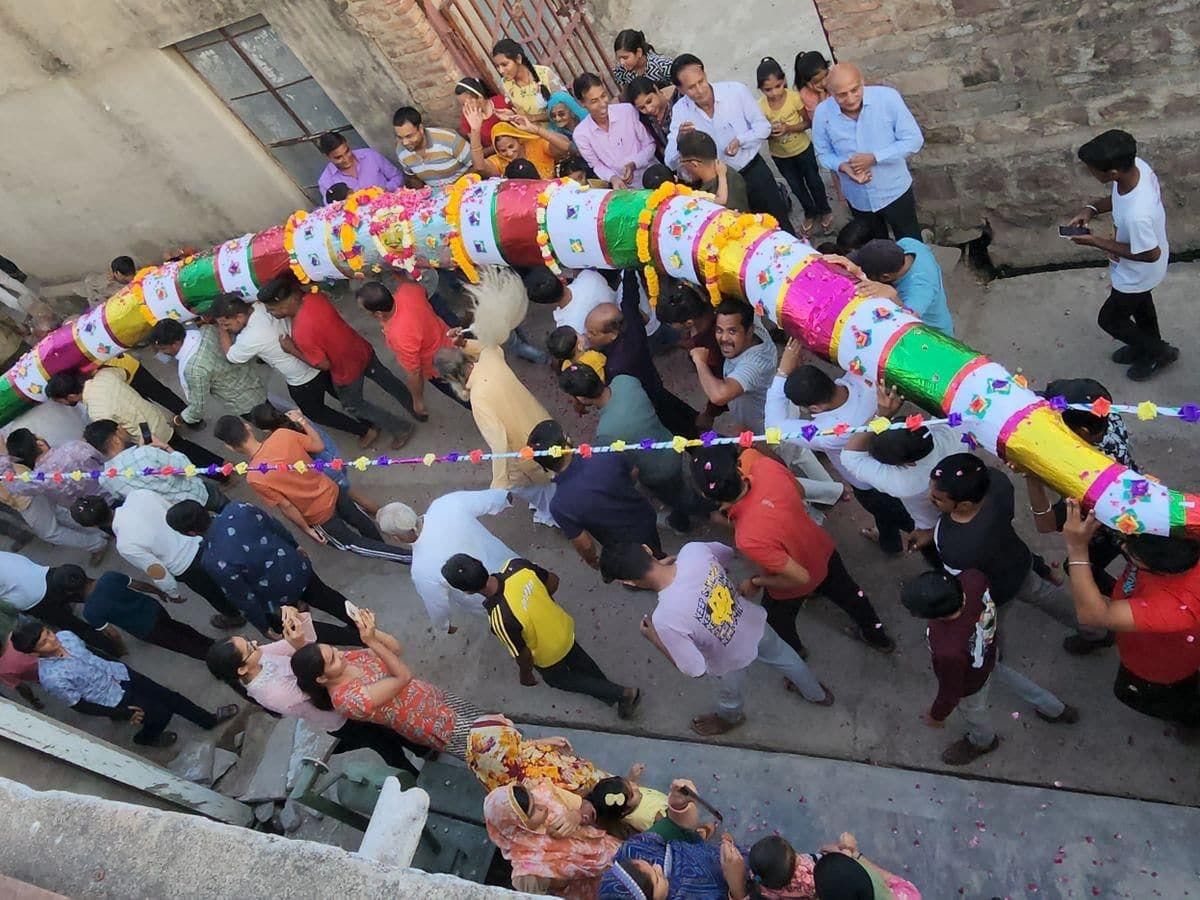
Why in News?
Dhanush Leela, a traditional folk event from the Hadauti region, took place for the first time in 150 years in the Baran district of Rajasthan.Key Details About Dhanush Leela:
- The event, lasting three days, coincided with Ram Navami and featured a dramatic depiction of Lord Ram breaking Lord Shiva's bow.
- It commenced with the Teej of Gangaur, which involved:
- Setting up the idol of Ganpati,
- Forming the organizing committee,
- Distributing tasks among members.
- Prior to the main event, a procession showcased traditional rides known as Sar Katya and Dhad Katya.
- Tableaux representing Tantra rituals were displayed in a square where the performance took place.
- All dialogues during the event were delivered in the local dialect called Bahi.
Major Folk Arts of Rajasthan
- Sanjhi: Girls worship Sanjhi as Goddess Parvati during the 15 days of Shradh Paksha. On the last day, women observe the Thumbudha fast.
- Mandha: Geometric designs such as triangles, hexagons, and circles are created with colours on walls and courtyards during special occasions.
- Phad Art: Stories of deities are painted on cloth known as Phad, primarily in Shahpura (Bhilwara) by the Joshi caste.
- Puppet: Dramatic performances using wooden puppets controlled by threads are popular, with production centres in Jaipur, Udaipur, and Chittaurgarh.
- Bevad:. wooden throne for Thakurji is crafted and taken to the pond on Ekadashi, with production centred in Bassi (Chittorgarh).
- Chopda:. wooden spice container with multiple compartments, used in worship, is known as Hatdi in western Rajasthan.
- Toran: During weddings, an artistic wooden figure is placed by the groom at the bride's house entrance, featuring a peacock or a suva, touched with a sword or a green twig.
Utensil Bank Scheme
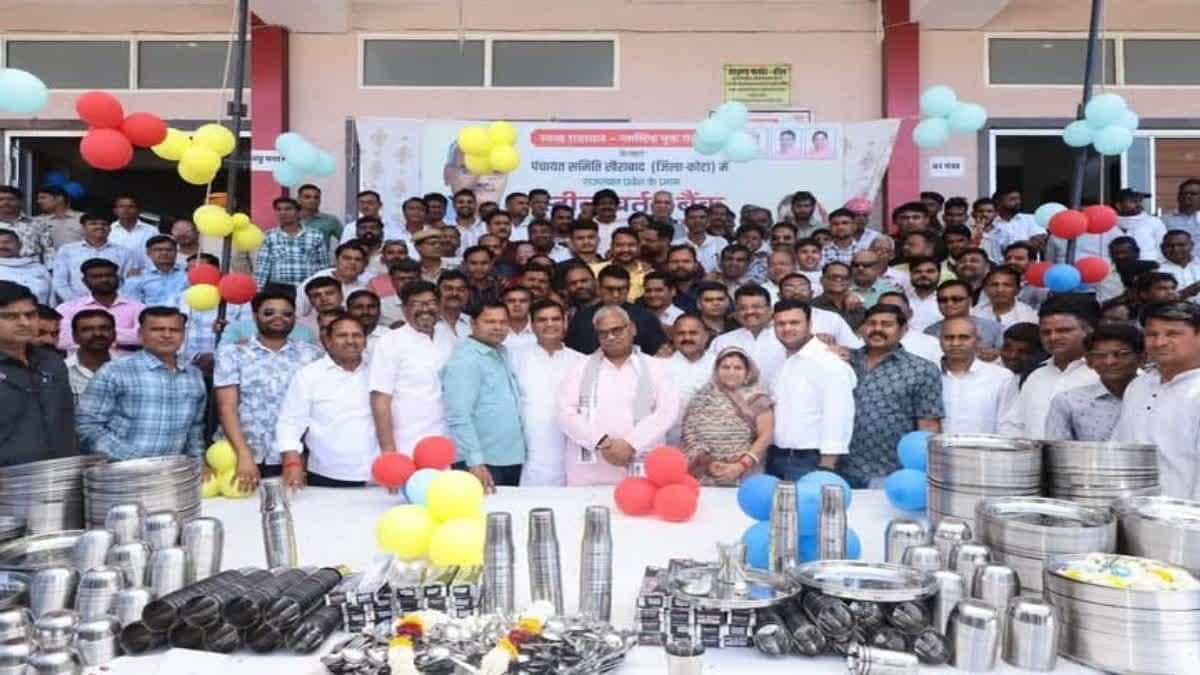
Why in News?
Bartan Bank Scheme: Plastic Free On 12th April 2025, the State Education and Panchayati Raj Minister launched the scheme aimed at making Baran district of Rajasthan plastic-free.
Key Points:
- The Utensil Bank Scheme is aimed at reducing plastic usage and promoting environmental protection, especially in rural areas.
- Under this scheme, utensil sets will be available for rent at a nominal fee of Rs 3, making them suitable for weddings and other social events.
- The initiative will start with 24 Gram Panchayats, with plans to expand and establish utensil banks in all Gram Panchayats in the future.
- Each utensil will have the name of the respective Gram Panchayat inscribed on it.
- Families Below Poverty Line (BPL) and special categories such as Scheduled Castes (SC) and Scheduled Tribes (ST) will receive a 50% discount on the rental fees.
- Self-help groups, managed through Rajivika, will be responsible for maintaining the utensils. Rajivika operates under the National Rural Livelihoods Mission (NRLM) and focuses on empowering women in rural areas through self-help groups and livelihood initiatives.
- The state government will provide Rs 1 lakh to each Gram Panchayat to support the scheme.
- The Swachh Bharat Mission (SBM) is a significant initiative aimed at promoting cleanliness and sanitation across India.
- Mahatma Gandhi emphasized the importance of cleanliness for a healthy life, which led to the foundation of the Swachh Bharat Mission on 2 October 2014, coinciding with Gandhi Jayanti.
- The mission covers both rural and urban areas, with the urban component managed by the Ministry of Housing and Urban Affairs, and the rural component by the Ministry of Jal Shakti.
Thar Desert
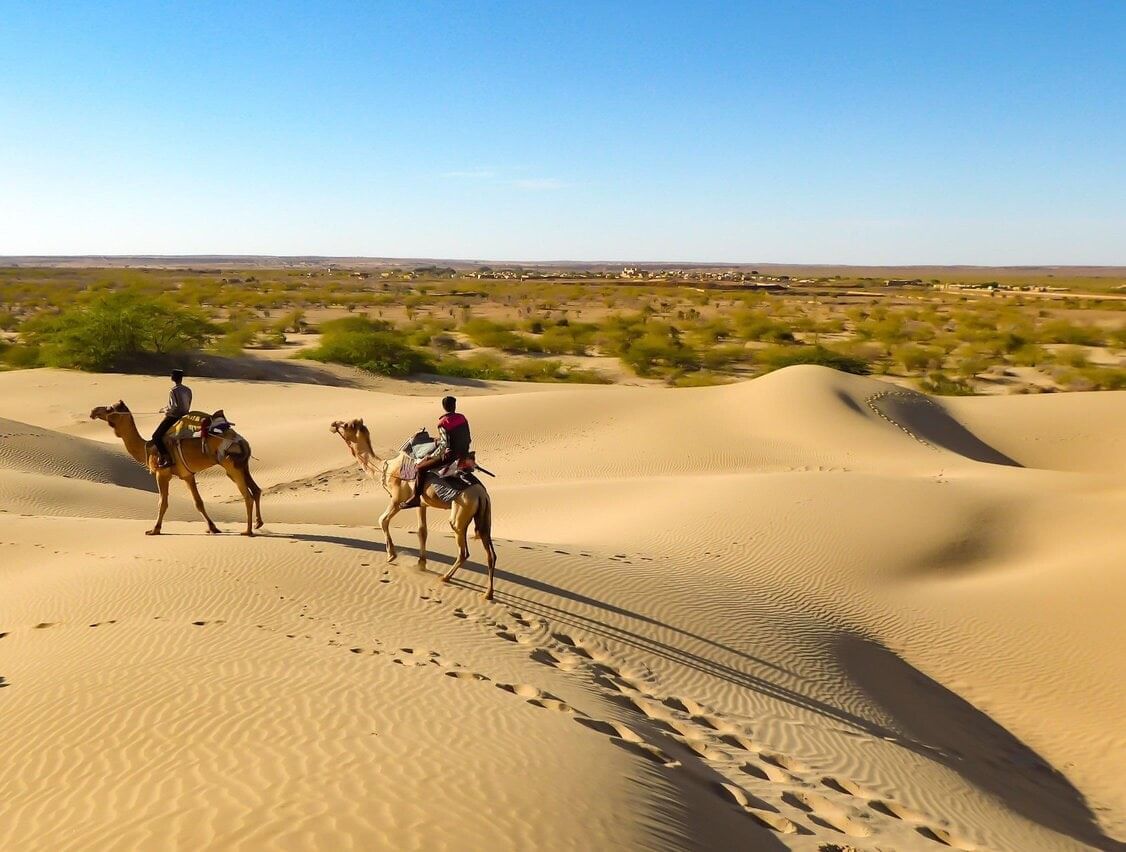 Desert Greening
Desert Greening
Why in News?
Recent study has indicated a remarkable 38% annual increase in greening in India's Thar Desert over the past twenty years. This positive change is attributed to factors like increased monsoon rainfall and the expansion of agricultural activities in the region.
Overview of Thar Desert
- Location: The Thar Desert, also known as the Great Indian Desert, spans approximately 200,000 square kilometres across northwestern India and southeastern Pakistan. In India, it covers parts of Rajasthan, Gujarat, Punjab, and Haryana, while in Pakistan, it includes areas in the Sindh and Punjab provinces.
- Geography and Climate: The Thar Desert is bordered by various geographical features: to the west, it is flanked by plains; to the north and northeast, by the Punjab Plains; to the southeast, by the Thar Desert itself (though this seems to be a repetition, it might refer to different sections or features of the desert); and to the south, by the Aravalli Range. The desert experiences a subtropical desert climate characterized by persistent high pressure and descending air, contributing to its arid conditions.
- Soil Types: The soils in the Thar Desert encompass several types, including desert soils, red desert soils, Chernozem, saline soils, lithosols, and regosols. These soils are generally coarse, well-drained, and rich in calcium, which influences the types of vegetation and agricultural practices in the region.
- Flora and Fauna: The Thar Desert is home to a diverse range of wildlife, including species such as the Blue Bull (Nilgai), Blackbuck, Great Indian Bustard (GIB), and Indian Gazelle (Chinkara). This biodiversity is supported by the various habitats present within the desert.
- Conservation Areas: Desert National Park, located in Rajasthan, is one of the largest national parks in India and is situated within the Thar Desert. This park plays a crucial role in the conservation of the desert's unique ecosystems and wildlife.
- Mineral Resources: The Thar Desert is rich in mineral resources, including one of the world's largest deposits of lignite, a type of coal. Additionally, the desert is known for its salt deposits, with saline lakes such as Sambhar and Kuchaman being notable features.
Bisalpur Dam
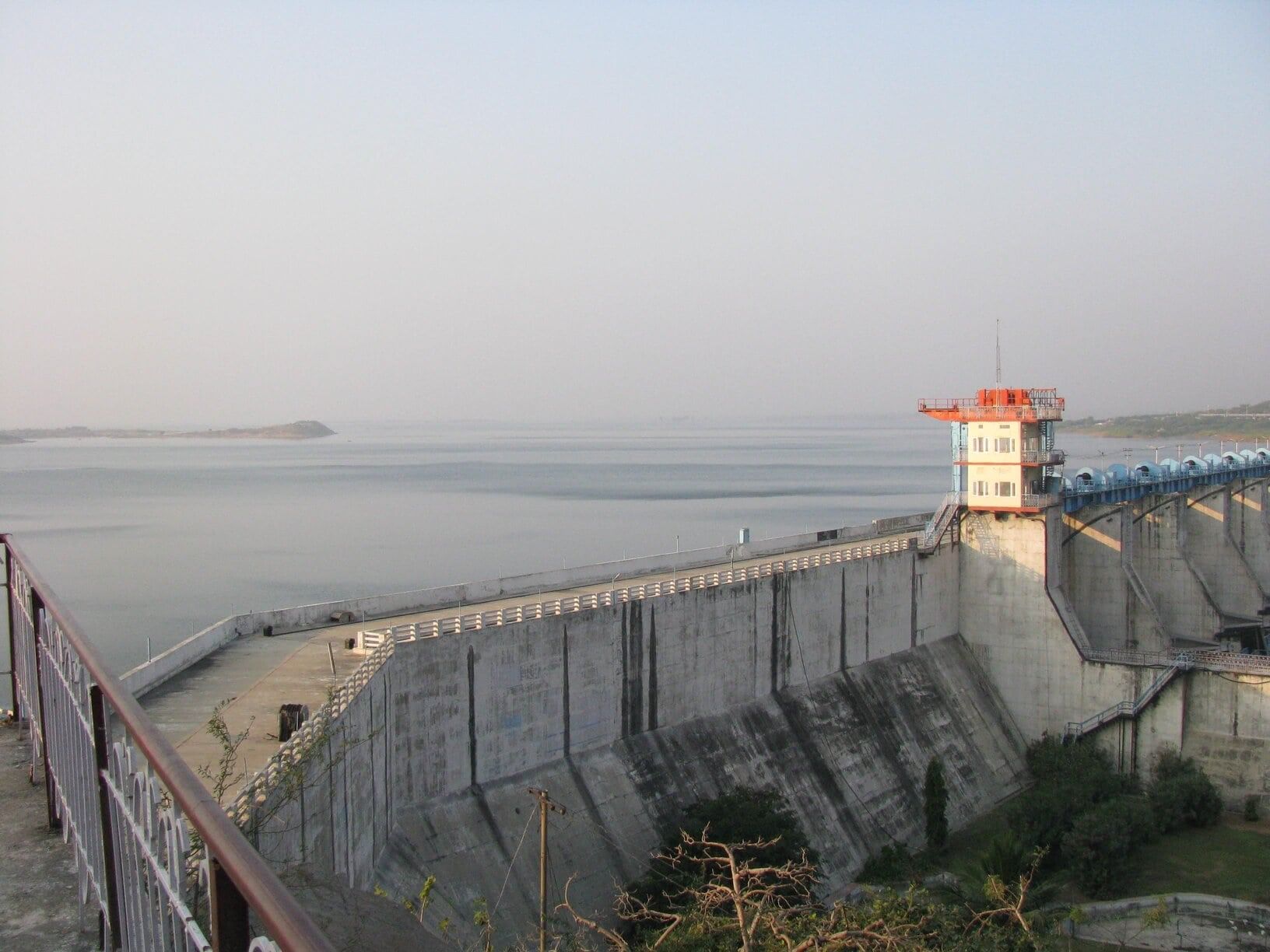 Water Crisis
Water Crisis
Why in News?
The Bisalpur Dam is making headlines because the ongoing heatwave and soaring temperatures are rapidly depleting the water supply that serves as drinking water for Jaipur, Ajmer, and Tonk in Rajasthan. If these conditions persist, the region could soon face a severe water crisis.
Key Points About the Issue:
- Due to increased evaporation, around 15 centimetres of water has been lost in the past month.
- This situation also affects the livelihoods dependent on the dam.
- Fishermen are facing challenges in their fishing activities, which could adversely impact their economic condition.
About Bisalpur Dam:
- The Bisalpur Dam is a gravity dam situated on the Banas River in Bisalpur, Tonk district, Rajasthan. A gravity dam is built from concrete or masonry and relies on its own weight to withstand the pressure of water, with its stability entirely based on gravity.
- The dam was constructed in 1999 to provide irrigation and drinking water. It is named after Bisaldev IV, the Chauhan ruler of Ajmer.
Ramgarh Dam
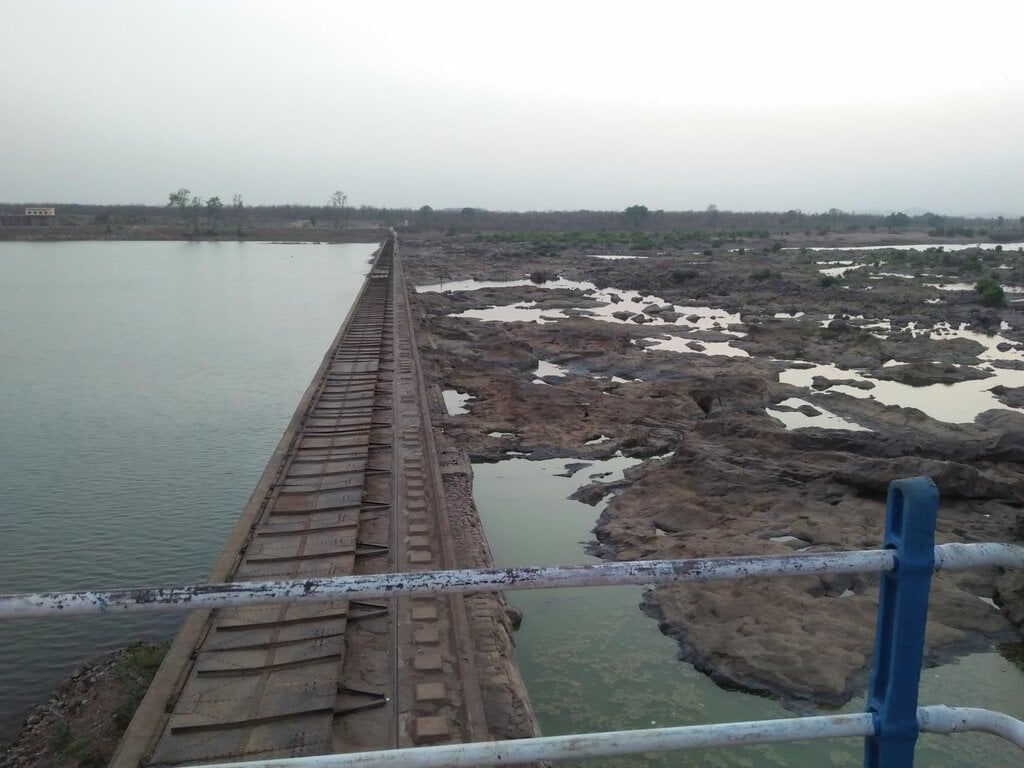 Ramgarh Dam Restoration
Ramgarh Dam Restoration
Why in News?
On April 11, 2025, the Water Resources Minister of Rajasthan initiated the foundation stone for various repair and beautification works at the Ramgarh Dam.
Key Points Regarding the Issue:
- An amount of Rs 252.93 lakh has been allocated for the restoration of Ramgarh Dam as per the budget for 2024-25.
- The completion of this work is anticipated within the next 12 months.
- Ram Jal Setu Link Project: This initiative aims to transfer water from Isarda Dam to Ramgarh Dam.
- Water will be supplied over a distance of 120 km (35 km via canal and 85 km through pipeline).
- Approximately 3.50 lakh people will benefit from this water supply project.
- Repair Operations Include:
- Repairing the damaged road of the palace
- Constructing a parapet wall and control room
- Beautifying the stairs and umbrellas in the submerged area
- Stone pitching, among other tasks.
- This project is expected to significantly alleviate the water crisis for farmers, animal herders, and villagers.
- It will stimulate development in the Ramgarh region and contribute to the overall growth of the state.
Overview of Ramgarh Dam:
- The Ramgarh Dam was built in 1904 during the rule of Sawai Madho Singh II, the Maharaja of Jaipur.
- It is situated near the Banganga River, covering a total catchment area of 841.14 square kilometres.
- The dam extends across several areas of Jaipur, including Shahpur, Amer, and Viratnagar.
- It has a maximum water storage capacity of 75.04 million cubic metres.
- In 1978, the government designated its water exclusively for drinking purposes.
Information on the Ramjal Setu Link Project:
- The Ramjal Setu Link Project is an interstate initiative aimed at balancing water resources between the states of Rajasthan and Madhya Pradesh.
- The project involves redirecting surplus water from the Chambal River and its tributaries—Kunnu, Kool, Parvati, and Kalisindh—to the river basins of Banas, Morel, Banganga, Ruparel, Parvatni, and Gambhir.
- This project is expected to benefit 17 districts in Rajasthan.
Ramdevra Great Indian Bustard Conservation Center
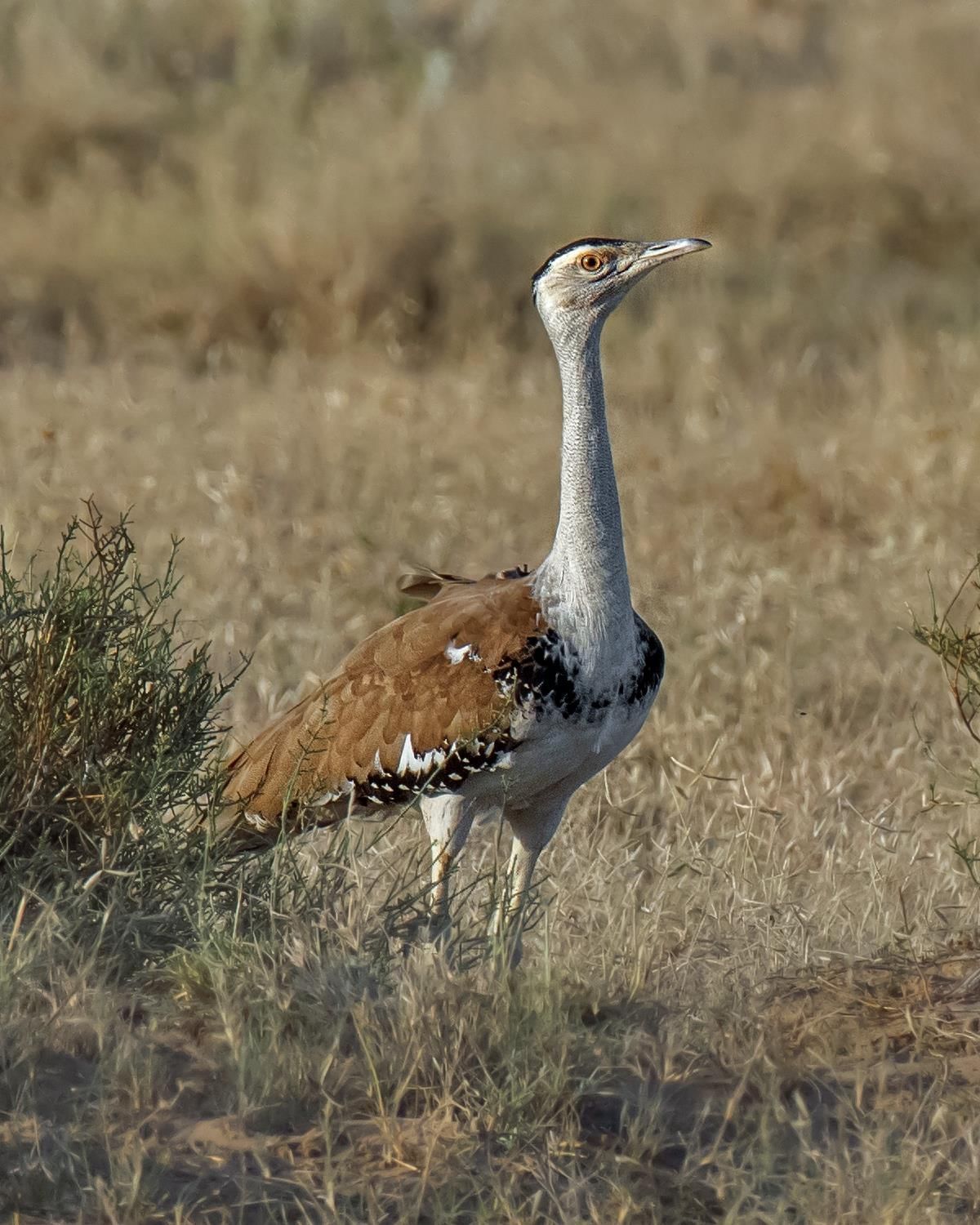 Great Indian Bustard Chick
Great Indian Bustard Chick
Why in News?
Chick has been born through artificial breeding at the Ramdevra Great Indian Bustard Conservation Center in Jaisalmer, Rajasthan. This is the first chick to be born there.
Key Points About the Chick:
- This birth brings the total number of Great Indian Bustards born through captive breeding to 51.
- The chick was born from natural mating between the female Jerry and the male Salkha.
- The breeding programme is a collaboration among the Wildlife Institute of India (WII), the state forest department, and the International Fund for Houbara Conservation based in Abu Dhabi.
Great Indian Bustard:
- The Ramdevra Conservation Centre was established in 2022, located near the Desert National Park, which is the natural habitat of the Great Indian Bustard.
- The Great Indian Bustard ( Ardeotis nigriceps. is the state bird of Rajasthan and is critically endangered in India.
- It is a key species representing grassland ecology.
- These birds are primarily found in Rajasthan and Gujarat, with smaller populations in Maharashtra, Karnataka, and Andhra Pradesh.
Protection status:
- International Union for Conservation of Nature Red List: Critically Endangered
- Convention on International Trade in Endangered Species of Wild Fauna and Flora (CITES): Appendix-1
- Convention on Conservation of Migratory Species (CMS): Appendix-I
- Wildlife Protection Act, 1972: Schedule-1
Desert National Park:
- The park is located in the Jaisalmer and Barmer districts of Rajasthan.
- It is home to the Great Indian Bustard, Rajasthan’s state animal - Chinkara, state tree - Khejri, and state flower - Rohida.
- It was declared a UNESCO World Heritage Site in 1980 and a national park in 1992.
Chittorgarh Fort
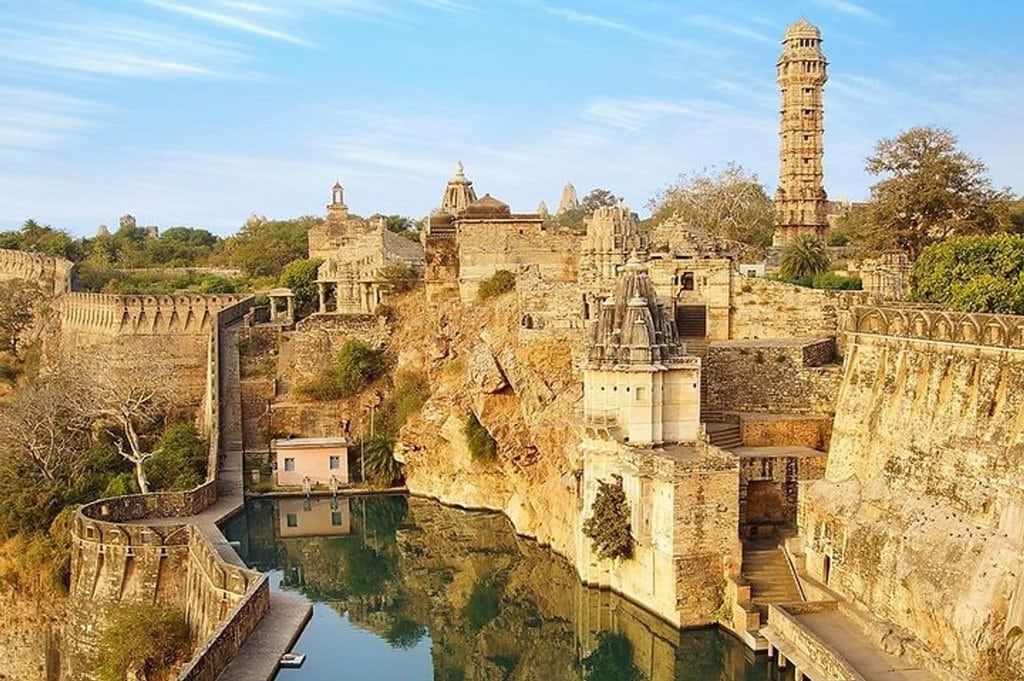 Chittorgarh Heritage
Chittorgarh Heritage
Why in News?
The Supreme Court is examining mining activities near Chittorgarh Fort. The Rajasthan government is considering a complete ban on mining within a 10 km radius of the fort.
Key Points About the Fort:
- Location and Size: Chittorgarh Fort is situated in Chittorgarh, Rajasthan, and is one of the largest forts in India.
- Elevation: The fort is located on a hill approximately 180 meters above sea level.
- Historical Background: The fort was built in the 7th century AD by Chitrangada Mori, a ruler of the local Maurya dynasty. In 728 AD, the Mewar rulers took control of Chittorgarh and made it their capital before later relocating to Udaipur. Throughout medieval India, the fort was a significant center of power for the Mewar dynasty.
Alauddin Khilji:
- Attack on the Fort: According to the poem ‘Padmavat’ by Malik Muhammad Jayasi, Alauddin Khilji attacked Chittorgarh Fort to capture Queen Padmini, the wife of King Ratan Singh of Mewar.
- Warrior Legends: The fort is associated with the heroic tales of many renowned warriors, including Badal, Gora, Maharana Pratap, Rana Kumbha, Patta, and Jaimal.
UNESCO World Heritage Site:
- Recognition: In 2013, Chittorgarh Fort was designated as a UNESCO World Heritage Site as part of the ‘Hill Forts of Rajasthan’.
- Features: The fort is known for its seven gates: Padan Gate, Ganesh Gate, Hanuman Gate, Bhairon Gate, Jodla Gate, Laxman Gate, and the main gate ‘Ram Pol’. The fort complex also contains four major palaces, 19 temples (Hindu and Jain), 20 water sources, and four significant monuments.
India’s First Sickle Cell Hub
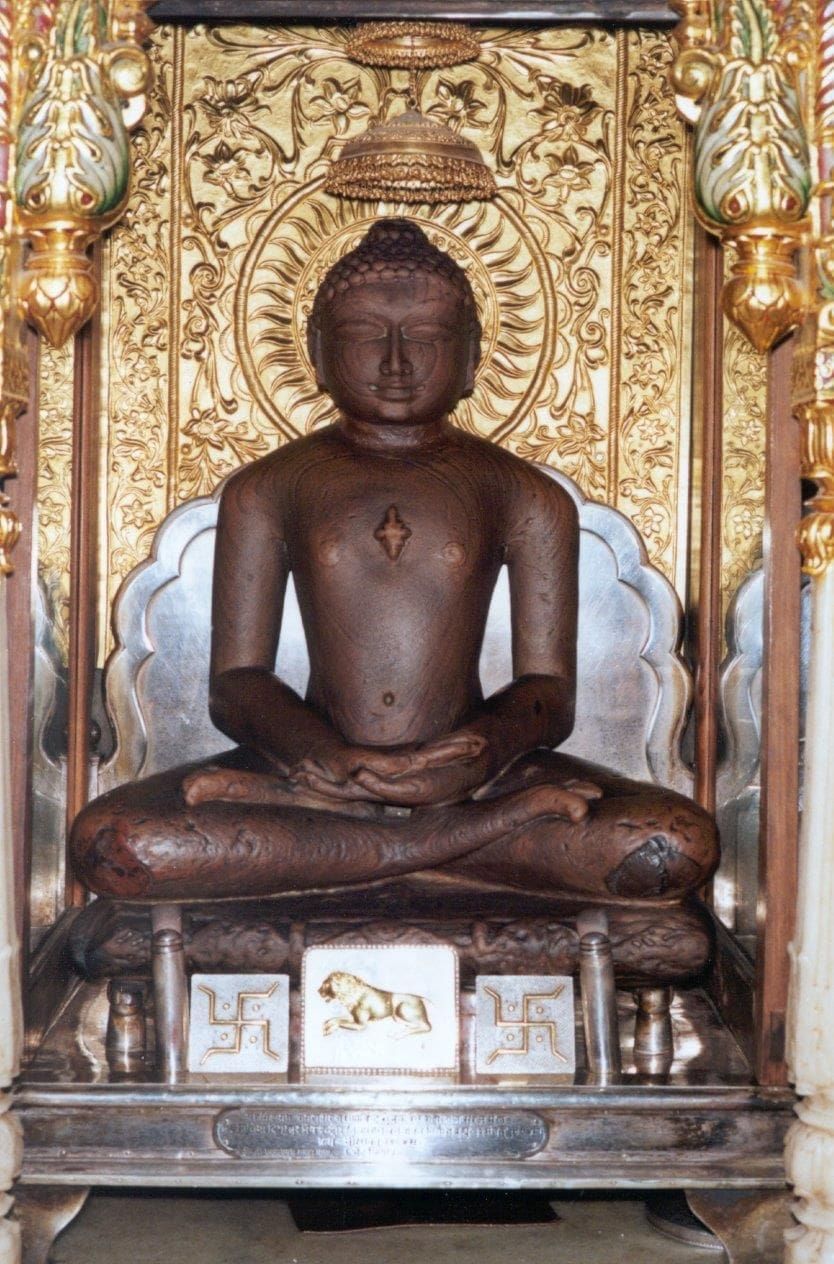 Sickle Cell Hub
Sickle Cell Hub
Why in News?
Recently, India’s first sickle cell wellness hub was established at the Sickle Cell Excellence Center located at Bal Chikitsalaya in Udaipur district of Rajasthan. It was inaugurated by the Tribal Minister of Rajasthan.
Key Points About Wellness Hub:
- This hub is the country’s first digital active centre, providing facilities from screening to consultation for sickle cell patients.
- The main objective is to ensure prevention, timely detection, and effective treatment of serious diseases, especially in tribal communities.
- This centre will offer screening, counselling, and OPD (Outpatient Department) services to patients through a digital medium, connecting remote areas to health services.
- This initiative will serve as a model for health systems, showcasing collaboration between State and Central Governments, along with social organisations.
Sickle cell disease (SCD) is a group of inherited disorders affecting haemoglobin in red blood cells. The disease involves abnormalities in a protein responsible for oxygen transport in red blood cells. In SCD, the red blood cells become stiff and sticky, resembling a C-shaped agricultural tool known as a “sickle.”
Symptoms:
- Chronic anaemia. This causes fatigue, weakness, and paleness in the body.
- Acute pain (also known as sickle cell crisis): This can lead to sudden and severe pain in various body parts, including bones, chest, back, arms, and legs.
- Delay in puberty and physical development.
Treatment:
- Blood transfusions. These can help relieve anaemia and reduce the risk of acute pain.
- Hydroxyurea. This medication can help lessen the frequency of pain episodes and manage long-term complications of the disease.
- Bone marrow or stem cell transplantation can also be considered as a treatment option.
Save Shahabad Forest Movement
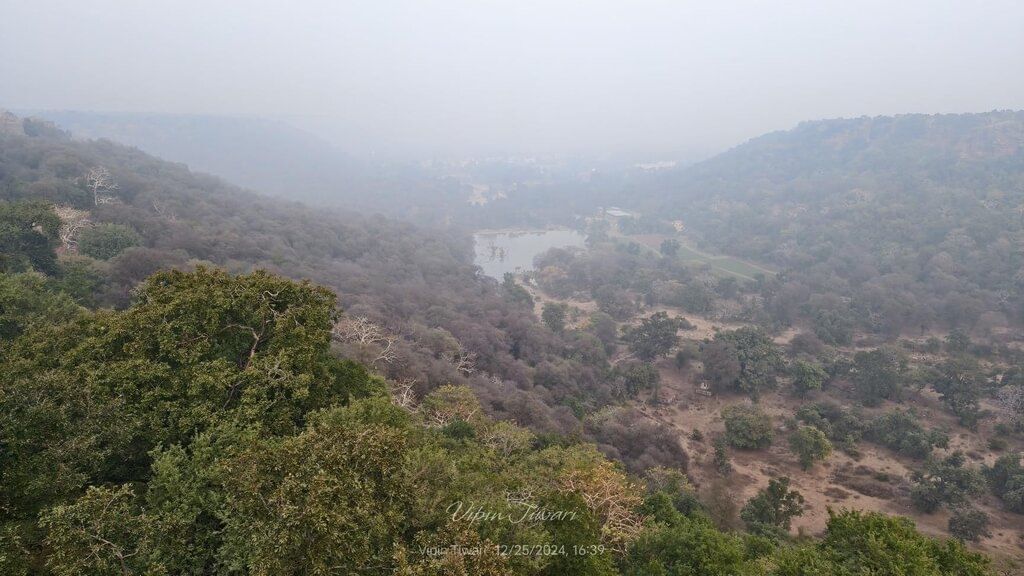 Forest Conservation
Forest Conservation
Why in News?
Activists are protesting against the plan to cut down trees for a pump storage project in the Shahabad forest of Rajasthan.
Key Points About the Project:
- The Kuno River Shahpur Pump Storage Project is an off-stream closed-loop pump storage project.
- It involves constructing two reservoirs, with water being pumped from a nearby reservoir to fill the lower one.
- The Ministry of Environment, Forest and Climate Change (MoEFCC) has approved Greenko Energies Pvt Ltd from Hyderabad to set up this project in Shahabad tehsil of Baran district.
- The project will cover 624.17 hectares of land in Kalauni, Baint, and Mungaoli villages, with 408 hectares being forested area.
- This area falls under the Wildlife (Protection) Amendment Act (WPAA) 2022 and is within the Shahabad Conservation Reserve, home to protected wildlife species.
Reasons for Protest:
- The project plans to cut down more than 400,000 trees, which would destroy the forest.
- This large-scale deforestation would negatively impact the climate and reduce the absorption of 2.25 million metric tons of carbon dioxide each year.
- Local ecology would be severely affected, threatening the livelihoods of residents.
- Environmentalists warn that this could harm wildlife, plants, and rare medicinal herbs.
- Tree cutting would lead to soil erosion, obstructing vital environmental benefits.
Cheetahs Kuno Cheetah Project:
- This hydropower project would adversely affect the movement and welfare of cheetahs introduced from Namibia and South Africa.
- The Shahabad forest, rich in biodiversity, is located near the designated habitat for cheetahs in Kuno National Park, Madhya Pradesh.
- The forest area lies between the Kuno River and the cheetah corridor, both of which would be disrupted by the project.
Kuno River:
- The Kuno River flows through Kuno National Park from south to north in Madhya Pradesh.
- This river originates from the Vindhya mountain range and passes through several districts, including Guna, Shivpuri, Sheopur, and Morena.
- The Kuno River area is part of India’s notable Cheetah Project located within Kuno National Park, supporting regional biodiversity and maintaining environmental balance.
Kuno National Park:
- Kuno National Park, established as a wildlife sanctuary in 1981 and upgraded to a national park in 2018, consists mainly of dry deciduous forests.
- The Kuno River, a major tributary of the Chambal, flows through the park, situated in the Vindhya mountain range.
- Fauna includes species such as blackbuck, gharial, leopard, striped hyena, Indian wolf, and sambar deer.
- The primary tree species in the park are Kardhai, Khair, and Salai.
108 Kundiya Rudra Mahamrityunjaya Mahayajna
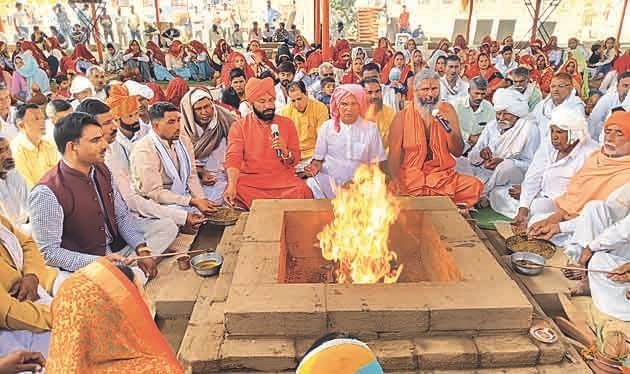 Maha Yagya Ceremony
Maha Yagya Ceremony
Why in News?
The Union Minister of Home Affairs participated in the Maha Purnahuti (grand conclusion) of the 108 Kundiya Rudra Mahamrityunjaya Maha Yagya and Sanatan Sammelan in Kotputli, Rajasthan.
Key Points About Maha Yagya
- Unity and Religious Awareness: The Mahayagna, led by Baba Nastinath over the past year, aimed to unite all sections of society and enhance religious awareness.
- Core Principles: The Minister praised Baba Nastinath's four key principles: truth, penance, detachment, and selfless service. These principles are vital for inner purification, righteous living, and making positive contributions to society.
- Holistic Approach: Baba Nastinath also emphasized the importance of protecting nature and caring for animals and birds, reflecting a comprehensive approach to spiritual and ecological well-being.
Importance of the Nath Sect
- Strengthening Sanatan Dharma: The Union Home Minister highlighted the Nath sect's crucial role in reinforcing Sanatan Dharma, tracing its lineage from Mahaprabhu Adinath to the nine gurus and their successors.
- Spiritual Significance of Dhuni: In the Nath tradition, the Dhuni is a vital spiritual symbol, representing self-realisation through the equilibrium of the five elements: earth, water, fire, sky, and air.
- Historical Background: The Nath Sampradaya, a significant Hindu religious sect, emerged in the medieval period, blending elements of Shaivism, Buddhism, and Yoga.
- Focus on Hatha Yoga: The sect emphasizes Hatha Yoga, guiding practitioners towards the highest state of the soul and mastery over the physical body.
- Founding Figures: Matsyendranath, a venerated yogi and sage from the 9th century, is considered the founder of the Nath sect. His contributions helped establish the sect as a prominent part of the religious landscape in India and Nepal.
- Influence in Tibetan Buddhism: Matsyendranath is also revered as a Mahasiddha in Tibetan Buddhism, further enhancing the sect's spiritual significance.
- Expansion and Popularity: Gorakhnath, a notable master in the 10th century and a disciple of Matsyendranath, played a crucial role in expanding the Nath sect's influence across India.
Meenakari Art
 Meenakari Cufflinks
Meenakari Cufflinks
Why in News?
During his visit to Thailand, Prime Minister Modi gifted tiger enamel cufflinks to Pitak Suksawat, husband of Thai Prime Minister Shinawatra.
Key Points About Meenakari Art
- Meenakari art is especially prevalent in the states of Rajasthan and Gujarat.
- This art form involves decorating metal surfaces by mixing minerals onto them.
- Vibrant designs featuring birds, flowers, and leaves are painted or adorned on various metals using bright colors.
- Meenakari art has its roots in Persia (Iran) and was introduced to India during the Mughal era in the 16th century.
- Fine glass powder is utilized to create colors and designs on metal, stone, and fabric.
- Notable artists in the field of Meenakari art, such as Kudrat Singh, are recognized for their mastery of this craft. Kudrat Singh was honored with the Padma Shri Award in 1980 for his contributions.
Features of Cufflinks
- These cufflinks are a stunning representation of Meenakari art.
- They showcase a majestic tiger face design, symbolizing courage and leadership.
- Crafted from high-quality silver with gold plating and vibrant enamel work, these cufflinks reflect the rich jewellery traditions of India.
Rajasthan Tops in Solar Power at Railway Stations
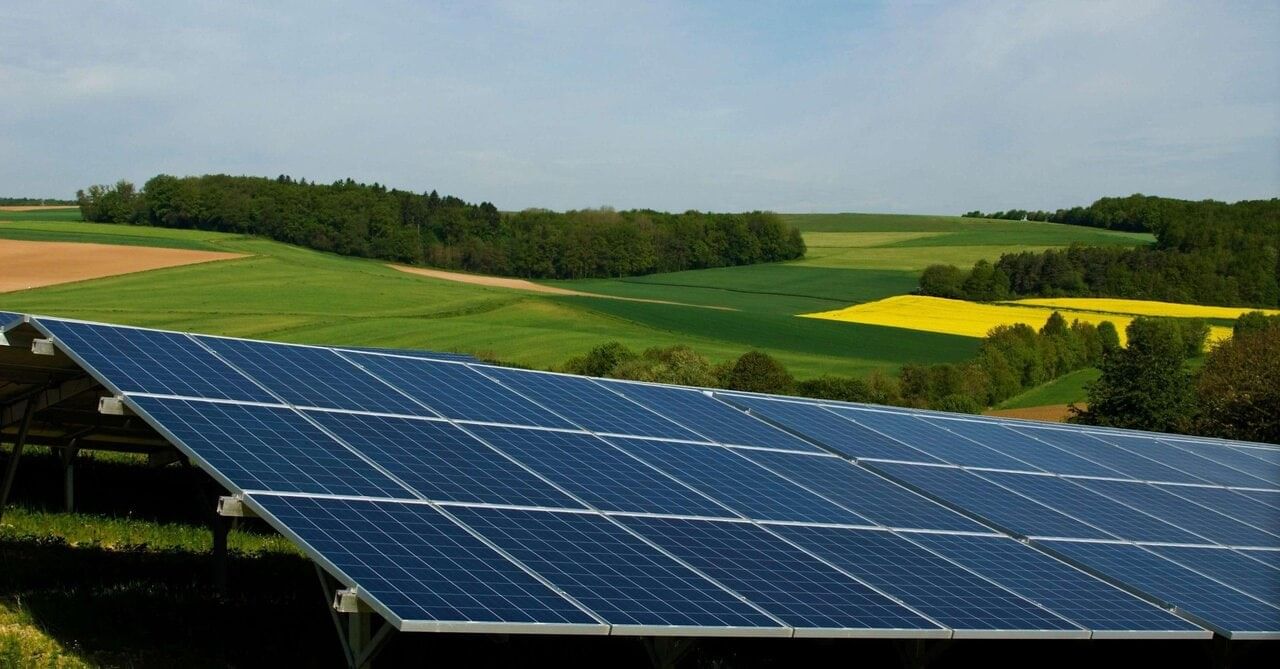 Rajasthan Solar Stations
Rajasthan Solar Stations
Why in News?
Indian Railways is actively promoting solar energy initiatives, with Rajasthan leading in the number of solar power installations at railway stations.
Solar Power Installation in Rajasthan
- Rajasthan has set up solar power plants at 275 railway stations, the highest in India.
- During the period of 2014-15 to 2019-20, 73 stations were equipped with solar power.
- An additional 200 stations were added from 2020-21 to February 2025.
Indian Railways' Renewable Energy Goals
- Indian Railways aims for 100% electrification by 2025-26 and plans to achieve net-zero carbon emissions by 2030.
- The strategy includes a significant reliance on renewable energy sources, particularly solar and wind energy.
- Plans are in place to install solar power plants on station rooftops and utilize vacant land for solar installations.
- The target is to establish 20 GW of solar power plants on unused land by 2030.
Top States for Solar Power Plants at Railway Stations
- Rajasthan - 275 stations
- Maharashtra - 270 stations
- West Bengal - 237 stations
- Uttar Pradesh - 204 stations
- Andhra Pradesh - 198 stations
Understanding Solar Energy
Solar energy is a clean and renewable resource generated from sunlight, which is converted into electricity using solar panels and solar thermal plants. This process produces electricity, heat, and power for various applications.
Advantages of Solar Energy
- Solar energy is available throughout the day, particularly during peak electricity demand periods.
- Solar energy conversion devices have a longer lifespan and require minimal maintenance.
- Unlike traditional coal-based power generation, solar energy is non-polluting and contributes to clean electricity production.
- Solar energy is abundantly accessible in nearly all regions of the country.
- It eliminates the need for electrical wiring and transmission for its utilization.
Chief Minister’s Free Electricity Scheme
 Solar Energy Initiative
Solar Energy Initiative
Why in News?
PM-Surya Ghar Free Electricity Scheme Recently, the Rajasthan government has announced that people will receive free electricity up to 150 units. Changes have been made to the rules for installing solar plants under the scheme.
Key Points About the Scheme:
- Under the Chief Minister Free Electricity Scheme in Rajasthan, currently, up to 100 units of free electricity is provided, benefiting over 10 million residents.
- Under the PM Surya Ghar Yojana, consumers can use 150 units of free electricity by installing solar plants on their rooftops.
- Those using up to 150 units monthly can get free solar plant installations at home.
- The objective is to promote solar energy and provide extra benefits to beneficiary families through affordable energy sources.
- Households consuming less than 150 units will receive free electricity for the first 150 units via community solar plants installed at local substations or suitable sites.
- Households using more than 150 units will receive free electricity for the first 150 units through a 1.1 kW rooftop solar plant.
- Each rooftop solar plant costs Rs 50,000 (excluding metering), with Rs 33,000 covered by central financial assistance and up to Rs 17,000 provided by the state.
PM-Surya Ghar Free Electricity Scheme
- The PM Surya Ghar Free Electricity Scheme, launched in February 2024 by the Ministry of New and Renewable Energy (MNRE), aims to provide free electricity to one crore households through rooftop solar panels.
- The scheme has an outlay of Rs 75,021 crore and is to be implemented by the financial year 2026-27.
- Under this scheme, up to 300 units of free electricity per month is provided, alongside up to 40% subsidy on installation costs, promoting the use of solar energy nationwide.
Eligibility:
- Must be an Indian citizen.
- Must be a house owner with a valid electricity connection.
- Family should not have received any other subsidy related to solar panels.
Implementation:
- The implementation of the PM Surya Ghar Free Electricity Scheme is managed by the National Programme Implementation Agency (NPIA) at the national level.
- State Implementation Agencies (SIA) handle the execution at the state level.
Gangaur Festival
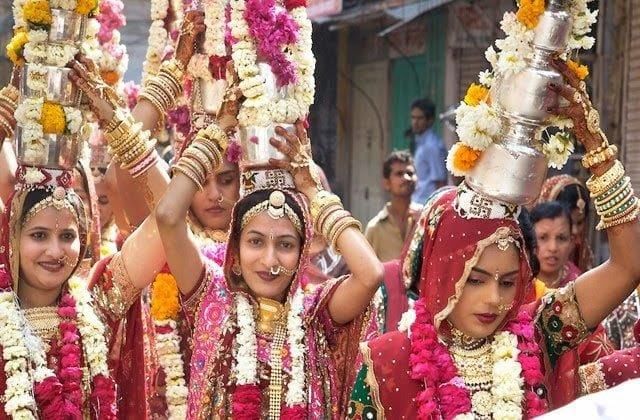 Gangaur Celebration
Gangaur Celebration
Why in News?
The Gangaur Festival is an annual celebration in Rajasthan, observed on the Tritiya Tithi of Shukla Paksha during the month of Chaitra in the Hindu calendar. This year, it was celebrated on 31 March 2025. Here are some key points about the festival:
- Chaitra Month. Chaitra is the first month of the Hindu calendar, marking the beginning of the lunar year.
- Significance of Gangaur. The festival holds great importance and is celebrated in various forms across Rajasthan. The name "Gangaur" combines "Gan," referring to Lord Shiva, and "Gauri" or "Gaur," referring to Goddess Parvati.
- Worship and Blessings. Gangaur is primarily celebrated by women who pray to Goddess Gauri and Lord Shiva, seeking blessings for a happy married life, ongoing good fortune, and the well-being of their children.
- Cultural Showcase. The festival is a vibrant display of Rajasthani culture and reflects the devotion of women towards their husbands.
Gangaur Dance
- The Gangaur Dance is a famous folk dance found in Rajasthan and Madhya Pradesh.
- During this dance, girls join hands and move in a circle, offering prayers to Goddess Gauri for the long life of their husbands.
- The songs sung during this dance celebrate the divine couples of Shiva and Parvati, Brahma and Savitri, and Vishnu and Lakshmi.
Hindu Solar Calendar (Shaka Samvat)
- The zero year of the Shaka Samvat is 78 AD.
- This calendar was started by the Shaka rulers to mark their victory over the Kushans.
- It is a solar calendar based on the Earth's yearly orbit around the Sun, which takes about 365 and a quarter days.
- The Government of India officially adopted it as the calendar in 1957.
- Each year in this calendar consists of 365 days.
New Judges Appointed to the Rajasthan High Court
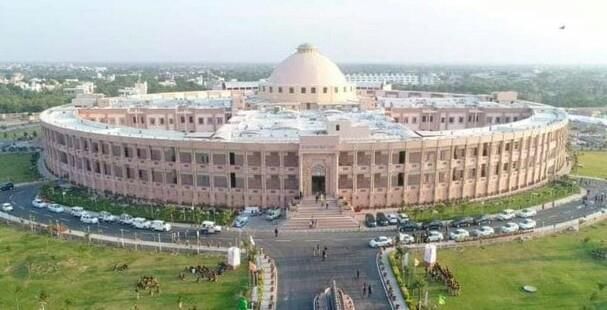 New Judges Appointed
New Judges Appointed
Why in News?
The Rajasthan High Court has welcomed four new judges, raising its total number to 38. The Chief Justice, Manindra Mohan Shrivastava, officiated the oath-taking ceremony for the new judges. Details of the New Judges:
- Anand Sharma, Sunil Beniwal, Mukesh Rajpurohit, and Sandeep Shah are the newly appointed judges, with Sharma and Shah hailing from Jaipur and Jodhpur, respectively.
Process of Appointing High Court Judges
- Article 217 of the Constitution outlines the procedure for appointing High Court judges.
- The President appoints judges in consultation with the Governor.
- The Chief Justice of the High Court is consulted when appointing judges other than the Chief Justice.
- A collegium consisting of the Chief Justice of India and two senior judges recommends appointments.
- The Chief Justice of the High Court proposes names in consultation with two senior colleagues.
- The Chief Minister advises the Union Law Minister, who forwards the proposal to the Governor.
- The Chief Justice of a High Court is usually from outside the state.
Overview of the Rajasthan High Court
- Established on 29 August 1949 under the Rajasthan High Court Ordinance, 1949.
- Located in Jodhpur, with an initial headquarters in Jaipur.
- The court's sanctioned strength is 50 judges.
- Prior to unification, five separate High Courts operated in Rajasthan.
- The court was unified and relocated to Jodhpur based on the Satyanarayan Rao Committee's recommendation.
- The first Chief Justice was Kamla Kant Varma.
Rajasthan Day
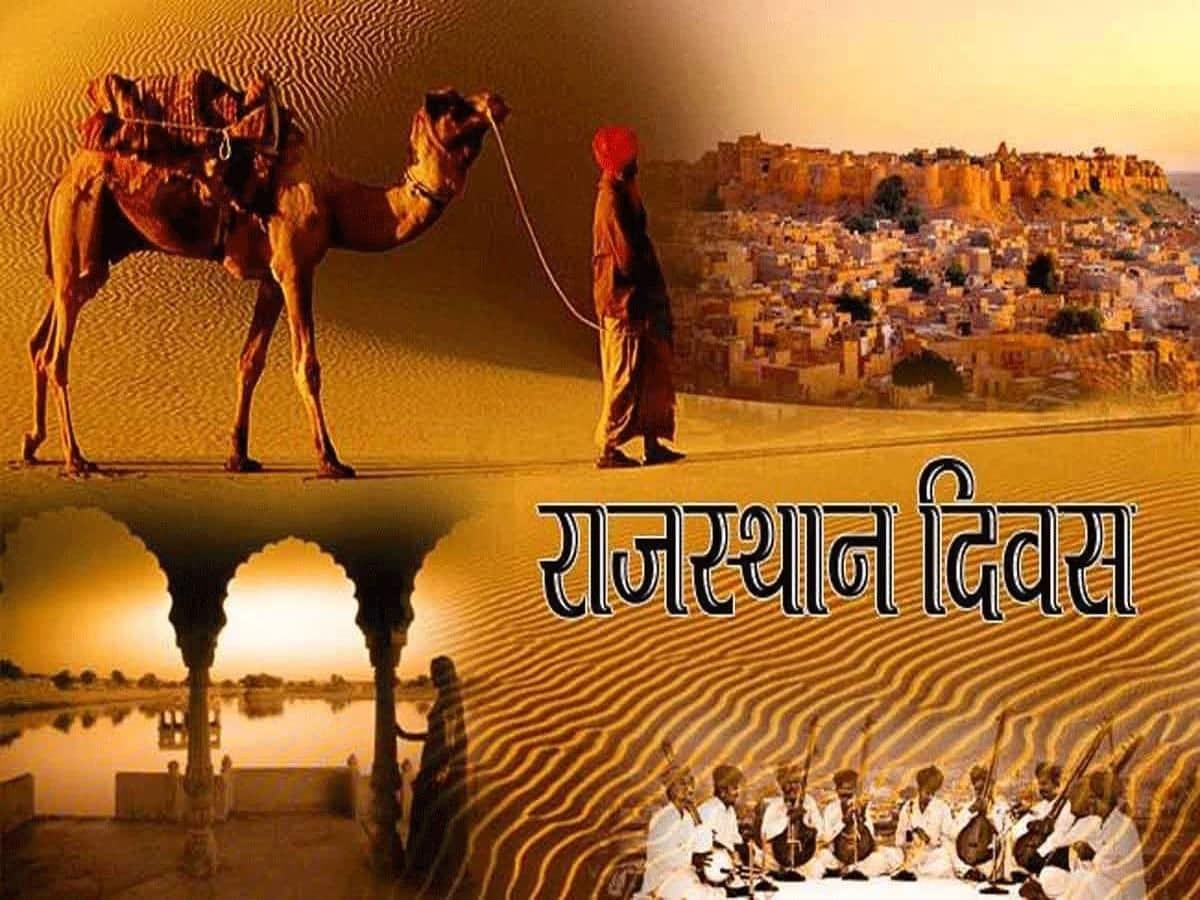
Why in News?
Recently, the Rajasthan government declared that it will celebrate Rajasthan Foundation Day on Chaitra Shukla Pratipada instead of 30th March 2025.
Key Points
- A Longstanding Request: The Nav Varsh Samaroh Samiti, established in 1992, has been urging the state government for years to observe Rajasthan Foundation Day on Chaitra Shukla Pratipada (Nav Samvatsar) instead of 30th March.
- The committee believes that Foundation Day marks the establishment of Rajasthan during an auspicious time in the Hindu calendar.
- Importance of Chaitra Shukla Pratipada: This day signifies when the Earth completes a full cycle around the Sun, resulting in equal day and night. It symbolizes balance and new beginnings.
- Establishment of Rajasthan: On 14th January 1949, in Udaipur, Sardar Vallabhbhai Patel announced the merger of the princely states of Jaipur, Bikaner, Jodhpur, and Jaisalmer. He inaugurated Greater Rajasthan on 30 March 1949 in Jaipur, which is why Rajasthan Day is celebrated every year on this date.
- At the time of independence, Rajasthan comprised 22 princely states, 19 ruled by kings and three with chiefships (Neemrana, Luv, and Kushalgarh).
- The Ajmer Merwara province was under British rule.
- The States Reorganisation Commission, following a recommendation by a commission led by Afzal Ali, merged the British-ruled Ajmer Merwara province into Rajasthan on 1 November 1956.
- During this reorganisation, Sunehta village of Mandsaur tehsil, Madhya Pradesh, was included in Rajasthan, while Sironj village of Jhalawar district was included in Madhya Pradesh.
- According to the Rao Committee 's recommendations, Jaipur was designated as the capital of Rajasthan state on 7 September 1949.
- Rajasthan is the largest state in India, covering an area of 3 lakh 42 thousand 239 square kilometres, which is 1/10th of the country's land area.
National Award for TB Elimination
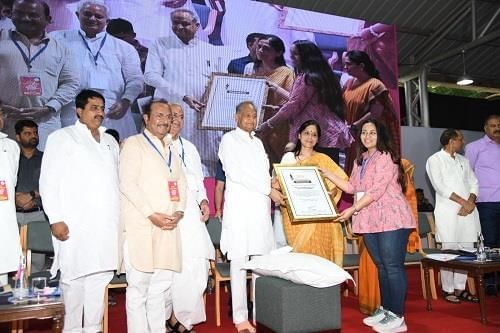 TB Free Initiative
TB Free Initiative
Why in News?
On 24th March 2025, Rajasthan received the National Award for its remarkable efforts in eliminating TB. The award was given by the Union Minister of Health and Family Welfare during a ceremony at Vigyan Bhavan in New Delhi for achieving the third position in the TB Free Gram Panchayat Campaign.
- Rajasthan has significantly contributed to campaigns like the TB Free India Campaign and the TB Free Gram Panchayat.
- In 2024, 3,355 Gram Panchayats in Rajasthan were declared TB free, compared to 586 in 2023.
- Over 19,000 Nishchay Mitras (community supporters) have joined the fight against TB in Rajasthan under the Prime Minister’s TB Free India Campaign.
This initiative, led by the Ministry of Health and Family Welfare (MoHFW), aims to speed up the country's efforts to eliminate TB by 2025.
- It focuses on providing extra support to improve treatment outcomes for TB patients.
- The initiative encourages community involvement to help meet India’s commitment to end TB by 2025.
- It leverages Corporate Social Responsibility (CSR) initiatives.
Ingredients
- Ni-Kshaya Mitra Initiative: This offers additional diagnostic, nutritional, and professional support for TB treatment.
- Ni-Kshaya Mitras (Donors) support health facilities at Block/Urban Wards/Districts/State levels to aid government efforts against TB.
- Ni-Kshaya Digital Portal: This platform provides community support for individuals suffering from TB.
Tuberculosis (TB)
Introduction: TB, or Tuberculosis, is caused by a bacterium named ‘Mycobacterium tuberculosis’. It mainly affects the lungs but can impact other body parts as well. This disease is treatable and curable.
- Transmission: TB spreads through the air when a person with 'pulmonary TB' coughs, sneezes, or spits, releasing TB germs into the environment.
- Symptoms: Common signs of 'pulmonary TB' include a cough with sputum (sometimes with blood), chest pain, weakness, weight loss, fever, and night sweats.
- Vaccine: The Bacille Calmette-Guérin (BCG) vaccine is available to prevent TB disease.
FAQs on RPSC Monthly Current Affairs: April 2025 - Monthly Current Affairs RPSC - RPSC RAS (Rajasthan)
| 1. What are the key reasons for the current discussions surrounding consolidation in Rajasthan? |  |
| 2. How does the concept of consolidation impact local governance in Rajasthan? |  |
| 3. What challenges might arise from the consolidation process in Rajasthan? |  |
| 4. What historical precedents exist for consolidation efforts in India, particularly in Rajasthan? |  |
| 5. What are the anticipated benefits of consolidation for the residents of Rajasthan? |  |



